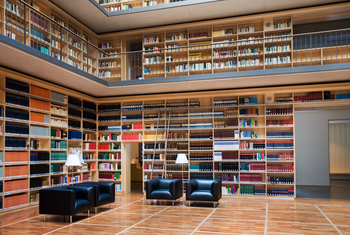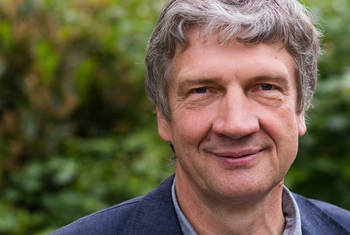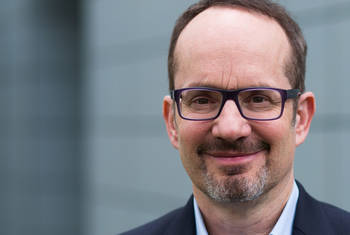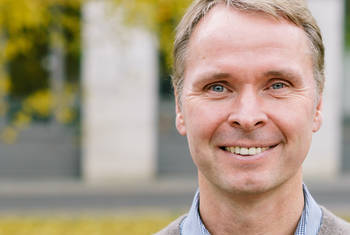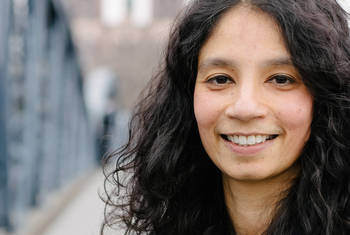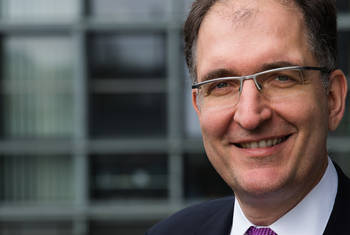Peter Fratzl How Does the Interaction of Water with Collagen Lead to Pretension in Our Connective Tissues?
Peter Fratzl is Director of the Department of Biomaterials at the Max Planck Institute of Colloids and Interfaces. He is also Chair of the Chemistry-Physics-Engineering Section of the Max Planck Society as well as a Member of the Hermann von Helmholtz Centre for Cultural Techniques, Humboldt University Berlin. In 2015, he was elected as Member of the Berlin-Brandenburg Academy of Sciences and Humanities. His research focus includes biomimetic materials and bone and mineral research with biomedical applications. Up to date, he has published more than 450 articles and books. He was awarded the Gottfried Wilhelm Leibniz Prize in 2010.
Area of Research
Biomimetic Materials, Bone and Mineral Research, Composite Materials
since 2003
Director
Max Planck Institute of Colloids and Interfaces
Department of Biomaterials
since 2004
Honorary Professor of Physics
Humboldt University of Berlin (Humboldt-Universität zu Berlin)
since 2009
Honorary Professor
University of Potsdam (Universität Potsdam)
1986-1998
Assistant and Associate Professor
University of Vienna
Institute for Materials Physics
1981-1985
Researcher
Austrian Academy of Sciences
1983
PhD in Physics
University of Vienna
1980
Diploma
École Polytechnique, Paris
- Chair of the Chemistry-Physics-Engineering Section of the Max Planck Society (2017 - 2020)
- Member of Hermann v. Helmholtz-Zentrum für Kulturtechnik, Humboldt University Berlin (since 2015)
- Acting Director, MPI for Microstructure Physics, Halle/Saale (2010 - 2014)
- Chair of Metal Physics at the University of Leoben (Austria) and Director of the Erich Schmid Institute of Materials Science of the Austrian Academy of Sciences (1998 - 2003)
- Scientific Advisor to the Director of the "Ludwig Boltzmann-Institute of Osteology", Vienna (1993)
Prizes
- Election as Member of the Berlin-Brandenburg Academy of Science and Humanities (2015)
- Election as Member of the Academy of Science and Literature / Mainz (2015)
- Election as Member of the German Academy of Science and Engineering (ACATECH) (2013)
- Jerome B. Cohen Distinguished Lecture Series, Northwestern University, Evanston, USA (2013)
- Doctor Honoris Causa, University of Montpellier, France (2010)
- Gottfried Wilhelm Leibniz-Preis (2010)
- Max Planck Research Prize for Pioneering Work on Biological and Bio-inspired Materials (with Prof. Robert Langer, MIT) (2008)
- Erwin Ühlinger Memorial Lecture, German Osteological Society (2008)
- Election as Corresponding Member of the Austrian Academy of Sciences (2007)
- Herbert Johnson Memorial Lectures, Cornell University, Ithaka, USA (2007)
- Seidman Family Memorial Lectures, Technion, Haifa, Israel (2007)
- Byk-Tosse Osteology Award (2000)
- Lilian B. Clark Lectureship, University of Texas at Dallas, USA (1998)
- Copp-Award of the German Osteological Society (1997)
- Austrian Government Award for Research in Rheumatology (1995)
- Erich Schmid Award of the Austrian Academy of Sciences (1988)
Fellowships
- Election as Fellow of the Materials Research Society (MRS), USA (2012)
- Visiting Research Fellow at the Heriot-Watt University in Edinburgh (1993 - 1994)
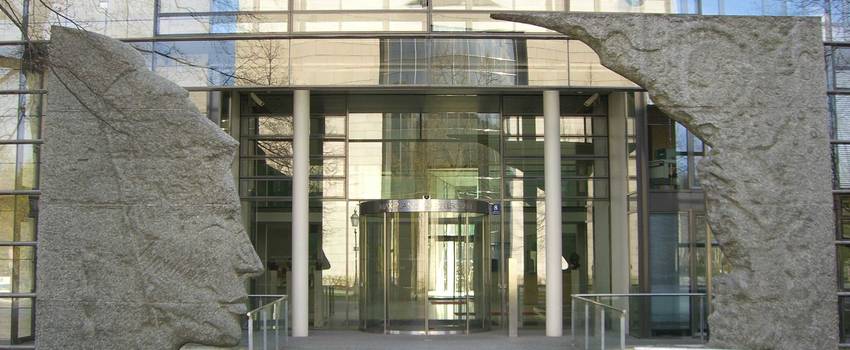 © Maximilian Dörrbecker
© Maximilian Dörrbecker
Max Planck Society
"The Max Planck Society is Germany's most successful research organization. Since its establishment in 1948, no fewer than 18 Nobel laureates have emerged from the ranks of its scientists, putting it on a par with the best and most prestigious research institutions worldwide. The more than 15,000 publications each year in internationally renowned scientific journals are proof of the outstanding research work conducted at Max Planck Institutes – and many of those articles are among the most-cited publications in the relevant field." (Source)
Institute
Max Planck Institute of Colloids and Interfaces
The Max Planck Institute of Colloids and Interfaces was founded in 1992. Research in Colloid and Interface Science is widely covered by the following Departments: Biomaterials, Biomolecular Systems, Colloid Chemistry and Theory & Bio-Systems, the Max Planck Research Group Mechano(bio)chemistry and the Emeritus Group (Interfaces). Current research topics are polymeric films, membranes, microcapsules, organic and inorganic nanostructures, biomineralization, nano- and microreactors, molecular motors and filaments as well as chemistry and biology of carbohydrates. Biomimetic research is at the core of the Institute’s activity. Common goal is to learn from nature how to build hierarchical materials or active systems with new functionalities, with adaptive, self-healing or self-assembling properties. (Source)
Map
The connective tissues in our body – such as skin, tendon, or bones – all contain a molecule called collagen. When you cut your skin, it springs open. This shows that the tissues in our body are under pretension. The research presented in this video is interested in the question of whether the interaction of collagen with water causes this tension. The researchers found, as PETER FRATZL explains, that the pretension comes from the contraction of the collagen molecules which is due to a competition for water between collagen and the sugar-rich molecules that surround them. By using synchrotron diffraction, the group managed to show that this leads to a conformational change of this helix; it shortens and creates enormous stresses. These findings are relevant for research in regenerative medicine as well as research into the uses of osmotic pressure for complex movements and force generation more generally.
LT Video Publication DOI: https://doi.org/10.21036/LTPUB10399
Water-mediated Collagen and Mineral Nanoparticle Interactions Guide Functional Deformation of Human Tooth Dentin
- Jean-Baptiste Forien, Ivo Zizak, Claudia Fleck, Ansgar Petersen, Peter Fratzl, Emil Zolotoyabko and Paul Zaslansky
- Chemistry of Materials
- Published in 2016




